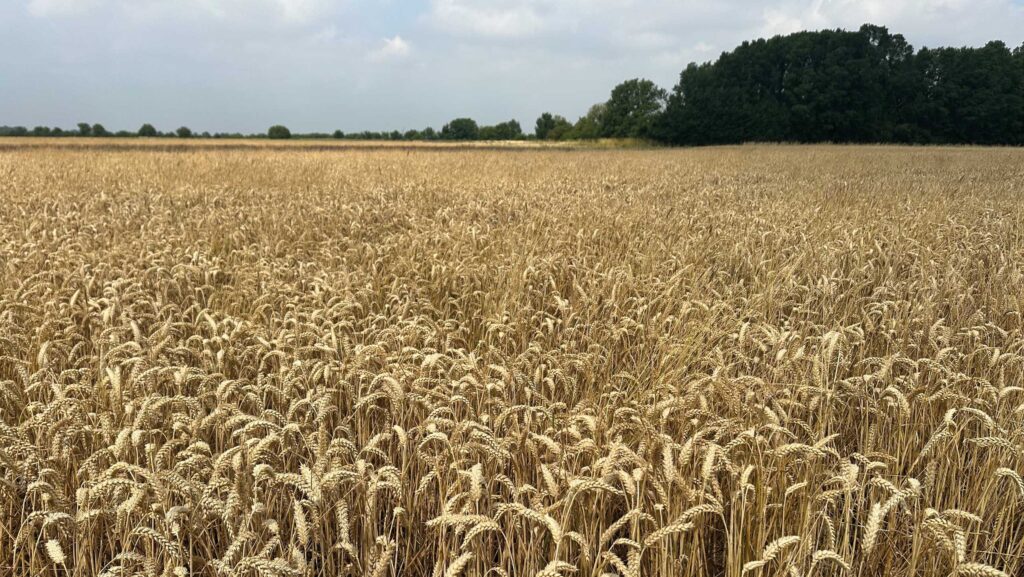Why low disturbance subsoiling raised yields in trial
 © Phil Hainey
© Phil Hainey Cracking soil with a low-disturbance subsoiler has been the springboard to help raise yields in the direct drilling plots of Agrii’s Stow Longa long-term blackgrass trial.
The silt-rich soils at the trial site 10 miles west of Huntingdon are a challenge, and there is also a blackgrass burden.
Agrii trials manager Steve Corbett recalls that in the early days of the trial, they quickly found that sometimes, it isn’t possible to direct drill at the Cambridgeshire site.
“On other Agrii sites like in Dorset, you can direct drill successfully, but it’s proving to be much more challenging on silt.”
See also: Advice for growers dealing with ergot this harvest
Steve describes it as six years of frustration, as they desperately want the system to work and gain the benefits of reduced cultivations.
“We need to make direct drilling work, as one of the benefits is soils have greater resilience and you can travel on them, extending the autumn drilling window.
“In contrast, the ploughed area has a lot of air in the soil profile. This, if replaced by water, is a serious challenge. Careful reconsolidation is required as seed-beds can fail, so we need to get the system working.”
But direct drilling has, over the years, produced the poorest yields, about 3t/ha lower than ploughing and the worst margins, adds seeds technical manager John Miles.
However, it’s not the end of the direct drilling story. In 2021, Agrii did a reset and the results from 2024 harvest suggest direct drilling may be turning the corner after introducing new measures.
Cultivation treatments
Before 2020, there were three treatments:
- Plough and press after harvest, and leave it until drilling. Then drill with minimal soil movement
- True direct drill using a disc drill and no other cultivations
- Deep one pass tillage down to 6-7in, with the aim of burying seed.
Since 2021, additional direct drilling measures included:
- Several passes of a straw rake
- Low disturbance loosening.
Cracking soil compaction
One particular frustration is that in seven years of cover cropping, there is only one occasion that Steve describes as being acceptable.
“Getting cover crops to work for the direct drilling part is essential. However, the window when conditions are ideal to establish can be narrow.”
For farmers in a similar situation, he advises looking at what grows on their farm in August as a guide for what could work.
He says, for example, they tried vetch, but they had pea and bean weevil problems, and mustard is not the best rooter. They are now using a mix of black oats, phacelia and radish.
Another problem is soil structure, impeding establishment. To tackle the compaction, Steve is running a low-disturbance leg to crack the soil where needed.
He says the key is to have a disc in front to put a cut in the soil, so when the leg goes through, there is no heave. “We don’t want to bring blackgrass seed back up and end up making things worse.”
Straw management issue
Another challenge is straw management, as uneven trash can impede establishment, causing thinner patches. This then lets blackgrass in, as crop competition is much lower in these patches.
So they are deploying up to three passes of a straw rake/shallow cultivation to deal with trash.
John says the 2024 yields show that direct drilling is getting closer to ploughing. Direct drilling wheat yields had been at about 5-6t/ha, and they are now up to 8.66t/ha, compared with 9.36t/ha for ploughing.
He believes the low-disturbance leg is having an effect. Separate cover crop trials showed an average 0.67t/ha yield lift with it.
How blackgrass affects carbon and nitrogen use
Blackgrass levels can have a big impact on how efficiently crop inputs are used, with high numbers reducing both nitrogen use efficiency and a farm’s carbon footprint.
Analysis of data generated by the blackgrass trials at Stow Longa revealed that both nitrogen use efficiency and carbon are driven by yields, says Agrii’s John Miles.
For example, some spring barley plots yielded 6t/ha with 120kg/ha of nitrogen fertiliser, which equated to a nitrogen use efficiency percent of somewhere in the mid 60s.
But for plots with little blackgrass, they were getting higher yields of 9t/ha with the same nitrogen use, which equates to 94% nitrogen use efficiency.
Carbon
He also ran the data through a carbon footprint calculator. One key finding was the difference in carbon dioxide equivalents (kg/ha) between the plough and direct drilling treatments was smaller than expected.
It was down to the extra passes to make the direct drilling system work at the heavy land site. This included several passes of the straw rake, plus the low-disturbance subsoiler.
Looking at diesel use for establishing a crop, it estimated 25 litres/ha and 17 litres/ha for the plough and direct drilling treatments, respectively. Without the additional passes, the direct drilling would be just 7 litres/ha, he adds. The figures for fuel usage are based on data supplied by the machinery manufacturer for the machines used at Stow Longa.
“We used greenhouse gas figures from ADAS Yen Zero which pitches the ploughing option as the worst when expressed as greenhouse gases/ha at about 1,350kg/ha compared to direct drilling at 372kg/ha. This clearly makes ploughing look bad on a per hectare basis.”
However, when expressed per tonne which is what the food industry buys, ploughing looks much better at 155kg/t for plough/press with its 9t/ha crop versus 176kg/t for direct drilling, which had a lower yield of about 6.5t/ha.
“Our use of the low disturbance leg, stubble rakes and successful cover crop integration in recent years enabled the yield drop to decrease to 0.4t/ha in harvest 2024, but we have burnt more diesel.”
He concludes that yield is the key driver to profitability, nitrogen use efficiency and carbon footprint calculations.

